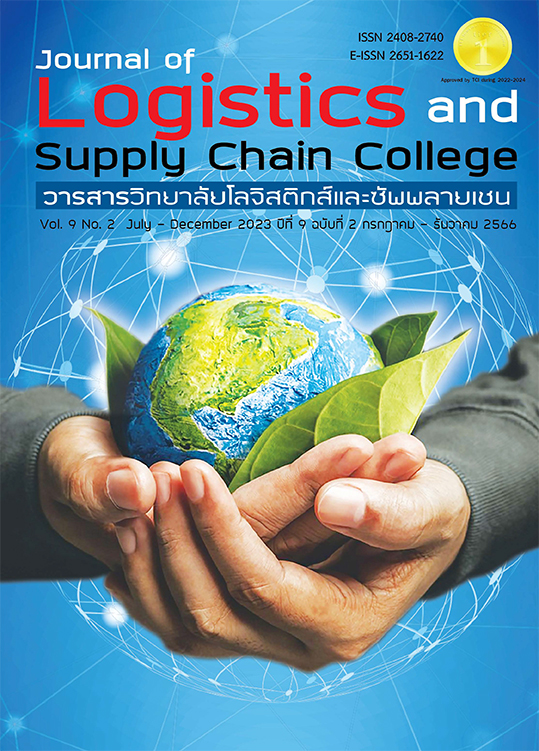Data Access Models in Digital Media to Successful Entrepreneur in Small and Medium Sized Businesses
DOI:
https://doi.org/10.53848/jlscc.v9i2.260930Keywords:
Data access models, Digital media, Successful entrepreneur, Small and medium sized businessesAbstract
The objectives of this research were to 1) study the response factors affecting digital media usage behavior of small and medium sized business entrepreneurs (SMEs). 2) To study influence of factors affecting the operator's response and 3) build an accessibility model in digital media for successful entrepreneurship. It uses a combination of quantitative and qualitative research. The research population was a group of 199,127 SMEs, a sample consisted of 400 questionnaires and an interview with three people. The research tools were online questionnaires and in-depth interviews which are tested by experts. Quantitative data were collected and analyzed by statistical analysis of a structural equation model (SEMs). The results obtained from the quantitative method were summarized as a statistical model and conduct an in-depth interview to verify the model. The finding found that 1) the response factors of SMEs entrepreneurs were lifestyle include marketing awareness, perceived competitive pressures, intentions, demands, and purchasing decisions. It affects the behavior of using digital media at a high level. 2) The factors that influence the responses of SMEs entrepreneurs include lifestyle, awareness of marketing data and perception of competitive pressures. The research shows that entrepreneurs have different ways of accessing digital information depending on their organizational style and presentation style to their customers. Therefore, entrepreneurs should study the satisfaction, image and attitude of entrepreneurs towards digital media. There are comparative studies between different forms of digital media or other types of media in order to provide guideline for doing business in the age of digital transformation. It will be useful to keep the business up-to-date. There is enough marketing media to cover the needs of customers.
References
ญาณกร วิภูสมิทธ์ และโมไนยพล รณเวช. (2559). การเปิดรับและพฤติกรรมการตอบสนองต่อโฆษณาทางยูทูบ (YouTube) ของผู้บริโภค. การค้นคว้าอิสระวารสารศาสตร์มหาบัณฑิต สาขาการตลาด, มหาวิทยาลัยธรรมศาสตร์.
วิเชียร วิทยอุดม. (2555). ทฤษฎีองค์การฉบับแนวใหม่ (พิมพ์ครั้งที่ 2). กรุงเทพฯ: ธนธัชการพิมพ์.
วิภาดา พิทยาวิรุฬห์. (2557). สื่อดิจิตอลที่มีอิทธิลพลต่อการตอบสนองของ ผู้บริโภคในการเข้าถึงข้อมูลทางการตลาด. วารสารบริหารธุรกิจ ศรีนครินทรวิโรฒ, 5(1) , 80-96.
สำนักงานส่งเสริมวิสาหกิจขนาดกลางและขนาดย่อม. (2563). รายงานสถานการณ์วิสาหกิจขนาดกลางและขนาดย่อม. ค้นเมื่อ 27 กันยายน 2561, จาก : http://www.sme.go.th/th/index.php/data-alert/alert/report-smes-year/report-year/report-year.
อัศวนนท์ อู่สุวรรณ. (2554). พฤติกรรมการตอบสนองต่อการสื่อสารทางการตลาด (ไอดา โมเดล) ของผู้ใช้บริการ เอไอเอส ในจังหวัดนครราชสีมา. การค้นคว้ อิสระปริญญามหาบัณฑิต, มหาวิทยาลัยเทคโนโลยีราชมงคลธัญบุรี.
Agarwal, A. (2009). Web 3.0 concepts explained in plain English. Retrieved 15 March 2021,From: http://www.labnol. org/internet/web-3 concepts-explained/8908.
Pittayaviroon, W & Kuris, N. (2014). Digital marketing influencing consumers’ response in approaching marketing informations. Srinakarinwirot Business Journal, 5(1), 80-96.
Zilincan, J. (2015). Search engine optimization, CBU international conference on innovation,technology transfer and education. Retrieved 15 March 2021, From: http://www.cbuic.cz/wpcontent/uploads/2014/12/Conference-Proceedings2015.pdf.



